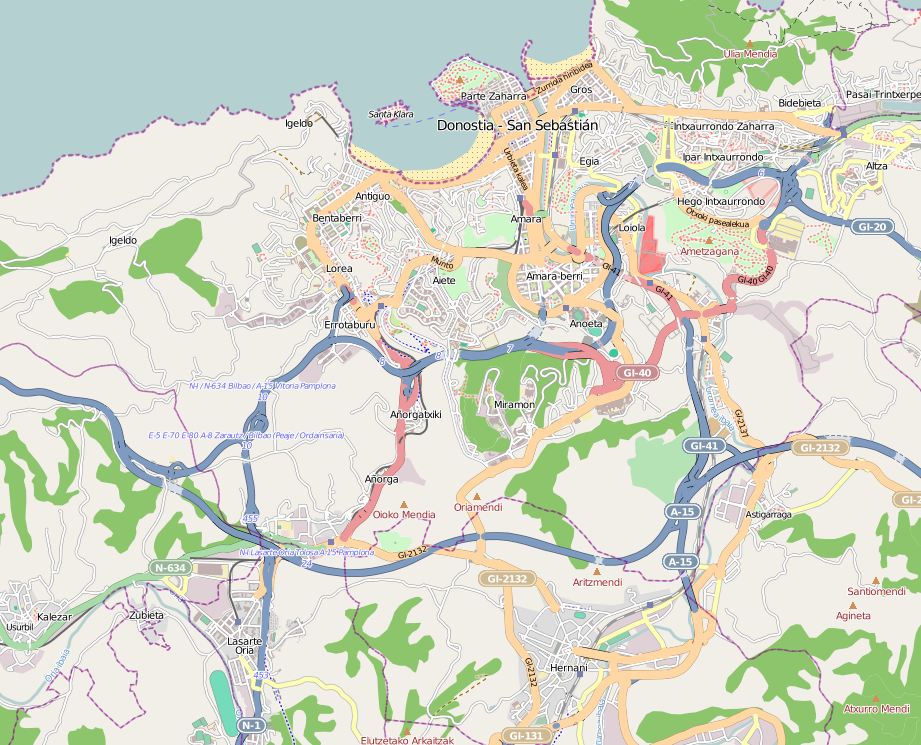|
Božena Kacerovská
Božena Kacerovská (4 August 1880 – 7 February 1970) was a Czech opera singer and music educator, based in Paris after 1906. Early life Božena Kacerovská was born at Louny, the daughter of a barber, Jan Kacerovský, and his wife, Anne Zunkovska. She studied music in Prague under Eduard Tregler and Karel Kovařovic, and later in Paris under Mathilde Marchesi and Jean de Reszke.David Hertl"Operní zpěvačka Božena Kacerovská"''Sever'' (August 4, 2012).Pavel R. Vejrážka, "AŽ ZEMŘU, PŘEJI SI, ABY MÉ SRDCE BYLO PROBODENO!" ''Lounský Kraj Regiz'' (February 1997). She also studied acting with Josef Šmaha. Career Kacerovská played Aida with the National Theatre Opera in Prague in 1901. She also sang with the New German Opera in Prague. In 1906 she moved to Paris. She sang at the Wagner festivals in San Sebastián in 1910, 1911, and 1913, and performed with the comic opera in London, Antwerp, and Madrid. During World War I she performed in benefit concerts for the French ... [...More Info...] [...Related Items...] OR: [Wikipedia] [Google] [Baidu] |
Louny
Louny (; ) is a town in the Ústí nad Labem Region of the Czech Republic. It has about 18,000 inhabitants. It lies on the Ohře River. The historic town centre is well preserved and is protected as an Cultural monument (Czech Republic)#Monument zones, urban monument zone. Administrative division Louny consists of three municipal parts (in brackets population according to the 2021 census): *Louny (17,318) *Brloh (143) *Nečichy (102) Brloh forms an Enclave and exclave, exclave of the municipal territory. Etymology The origin of the name Louny is unclear. Older theories, which are less likely, link the name to the personal name Lún, to the Czech word ''lůno'' (literally 'womb', but here meaning 'valley'), to the bird ''luňák'' (i.e. 'Kite (bird), kite'), or even to the Celtic word ''louwn'' ('lawn'). More modern and more likely theories attribute the origin of the name to the Old Czech words ''lunúti'' ('to flow fast') and ''lúňa / lúna'' ('Current (stream), current'), wh ... [...More Info...] [...Related Items...] OR: [Wikipedia] [Google] [Baidu] |
San Sebastián
San Sebastián, officially known by the bilingual name Donostia / San Sebastián (, ), is a city and municipality located in the Basque Autonomous Community, Spain. It lies on the coast of the Bay of Biscay, from the France–Spain border. The capital city of the province of Gipuzkoa, the municipality's population is 188,102 as of 2021, with its metropolitan area reaching 436,500 in 2010. Locals call themselves ''donostiarra'' (singular) in Basque, also using this term when speaking in Spanish. It is also a part of Basque Eurocity Bayonne-San Sebastián. The economic activities in the city are dominated by the service sector, with an emphasis on commerce and tourism, as San Sebastián has long been well-known as a tourist destination. Despite the city's relatively small size, events such as the San Sebastián International Film Festival and the San Sebastian Jazz Festival have given it an international dimension. San Sebastián, along with Wrocław, Poland, was the Eur ... [...More Info...] [...Related Items...] OR: [Wikipedia] [Google] [Baidu] |
Czech Women In World War I
Czech may refer to: * Anything from or related to the Czech Republic, a country in Europe ** Czech language ** Czechs, the people of the area ** Czech culture ** Czech cuisine * One of three mythical brothers, Lech, Czech, and Rus *Czech (surname) *Czech, Łódź Voivodeship, Poland *Czechville, Wisconsin, unincorporated community, United States See also * Čech, a surname * Czech lands * Czechoslovakia * List of Czechs * * * Check (other) * Czechoslovak (other) * Czech Republic (other) * Czechia (other) Czechia is the official short form name of the Czech Republic. Czechia may also refer to: * Historical Czech lands *Czechoslovakia (1918–1993) *Czech Socialist Republic (1969–1990) *Protectorate of Bohemia and Moravia (1939–1945) See also ... {{disambiguation Language and nationality disambiguation pages ... [...More Info...] [...Related Items...] OR: [Wikipedia] [Google] [Baidu] |
Sopranos From Austria-Hungary
A soprano () is a type of classical singing voice and has the highest vocal range of all voice types. The soprano's vocal range (using scientific pitch notation) is from approximately middle C (C4) = 261 Hz to A5 in choral music, or to soprano C (C6) or higher in operatic music. In four-part chorale style harmony, the soprano takes the highest part, which often encompasses the melody. The soprano voice type is generally divided into the coloratura, soubrette, lyric, spinto, and dramatic soprano. Etymology The word "soprano" comes from the Italian word '' sopra'' (above, over, on top of),"Soprano" '''' as the soprano is the highest pitch human voice, often given ... [...More Info...] [...Related Items...] OR: [Wikipedia] [Google] [Baidu] |
1970 Deaths
Events January * January 1 – Unix time epoch reached at 00:00:00 UTC. * January 5 – The 7.1 1970 Tonghai earthquake, Tonghai earthquake shakes Tonghai County, Yunnan province, China, with a maximum Mercalli intensity scale, Mercalli intensity of X (''Extreme''). Between 10,000 and 14,621 are killed and 30,000 injured. * January 15 – After a 32-month fight for independence from Nigeria, Biafran forces under Philip Effiong formally surrender to General Yakubu Gowon, ending the Nigerian Civil War. February * February 1 – The Benavídez rail disaster near Buenos Aires, Argentina (a rear-end collision) kills 236. * February 10 – An avalanche at Val-d'Isère, France, kills 41 tourists. * February 11 – ''Ohsumi (satellite), Ohsumi'', Japan's first satellite, is launched on a Lambda-4 rocket. * February 22 – Guyana becomes a Republic within the Commonwealth of Nations. * February – Multi-business Conglomerate (company), conglomerate Virgin Group is founded as a ... [...More Info...] [...Related Items...] OR: [Wikipedia] [Google] [Baidu] |
1880 Births
Events January *January 27 – Thomas Edison is granted a patent for the incandescent light bulb. Edison filed for a US patent for an electric lamp using "a carbon filament or strip coiled and connected ... to platina contact wires." granted 27 January 1880 Although the patent described several ways of creating the carbon filament ,including using "cotton and linen thread, wood splints, papers coiled in various ways," Edison and his team later discovered that a carbonized bamboo filament could last more than 1200 hours. * January **The international White slave trade affair scandal in Brussels is exposed and attracts international infamy. **The Gokstad ship is found in Norway, the first Viking ship burial to be excavated. February * February 2 ** The first electric streetlight is installed in Wabash, Indiana. ** The first successful shipment of frozen mutton from Australia arrives in London, aboard the SS ''Strathleven''. * February 4 – The Black Donnelly Massa ... [...More Info...] [...Related Items...] OR: [Wikipedia] [Google] [Baidu] |
French Red Cross
The French Red Cross (), or the CRF, is the national Red Cross Society in France founded in 1864 and originally known as the ''Société française de secours aux blessés militaires'' (SSBM). Recognized as a public utility since 1945, the French Red Cross is one of the 191 national societies of the International Red Cross and Red Crescent Movement. It has more than 62,000 volunteers and 17,000 employees. Its network consists of 1,062 local offices, 108 departmental and territorial delegations and 634 social, medico-social and health establishments throughout France, including the overseas departments and territories. History Leaders ;Société de Secours aux blessés militaires (SSBM) * 1864–1869: Anatole de Montesquiou-Fezensac * 1869–1870: Charles-Marie-Augustin de Goyon * 1870–1873: Maurice de Flavigny * 1873–1886: Duc de Nemours * 1887–1893: Patrice de Mac-Mahon * 1893–1897: Duc d'Aumale * 1897–1903: Léopold Davout d'Auerstaedt * 1903–1916: Melchi ... [...More Info...] [...Related Items...] OR: [Wikipedia] [Google] [Baidu] |
World War I
World War I or the First World War (28 July 1914 – 11 November 1918), also known as the Great War, was a World war, global conflict between two coalitions: the Allies of World War I, Allies (or Entente) and the Central Powers. Fighting took place mainly in European theatre of World War I, Europe and the Middle Eastern theatre of World War I, Middle East, as well as in parts of African theatre of World War I, Africa and the Asian and Pacific theatre of World War I, Asia-Pacific, and in Europe was characterised by trench warfare; the widespread use of Artillery of World War I, artillery, machine guns, and Chemical weapons in World War I, chemical weapons (gas); and the introductions of Tanks in World War I, tanks and Aviation in World War I, aircraft. World War I was one of the List of wars by death toll, deadliest conflicts in history, resulting in an estimated World War I casualties, 10 million military dead and more than 20 million wounded, plus some 10 million civilian de ... [...More Info...] [...Related Items...] OR: [Wikipedia] [Google] [Baidu] |
National Theatre (Prague)
The National Theatre () is a historic opera house in Prague, Czech Republic. It is known as the alma mater of Czech opera, and as the national monument of Czech history and art. The National Theatre belongs to the most important Czech cultural institutions, with a rich artistic tradition, which helped to preserve and develop the most important features of the nation–the Czech language and a sense for a Czech musical and dramatic way of thinking. Today the National Theatre consists of three artistic ensembles: opera, ballet and drama. They alternate in their performances in the historic building of the National Theatre, in the State Opera, in the Estates Theatre and in the Kolowrat Theatre. All three artistic ensembles select their repertoire both from classical heritage, and modern authors. Initial design and construction, 1844 to 1881 The cornerstone of the National Theatre was laid on 16 May 1868, but the idea of building a theatre dates back to the autumn of 1844 at ... [...More Info...] [...Related Items...] OR: [Wikipedia] [Google] [Baidu] |
Austria-Hungary
Austria-Hungary, also referred to as the Austro-Hungarian Empire, the Dual Monarchy or the Habsburg Monarchy, was a multi-national constitutional monarchy in Central Europe#Before World War I, Central Europe between 1867 and 1918. A military and diplomatic alliance, it consisted of two sovereign states with a single monarch who was titled both the Emperor of Austria and the King of Hungary. Austria-Hungary constituted the last phase in the constitutional evolution of the Habsburg monarchy: it was formed with the Austro-Hungarian Compromise of 1867 in the aftermath of the Austro-Prussian War, following wars of independence by Hungary in opposition to Habsburg rule. It was dissolved shortly after Dissolution of Austria-Hungary#Dissolution, Hungary terminated the union with Austria in 1918 at the end of World War 1. One of Europe's major powers, Austria-Hungary was geographically the second-largest country in Europe (after Russian Empire, Russia) and the third-most populous (afte ... [...More Info...] [...Related Items...] OR: [Wikipedia] [Google] [Baidu] |
Aida
''Aida'' (or ''Aïda'', ) is a tragic opera in four acts by Giuseppe Verdi to an Italian libretto by Antonio Ghislanzoni. Set in the Old Kingdom of Egypt, it was commissioned by Cairo's Khedivial Opera House and had its première there on 24 December 1871, in a performance conducted by Giovanni Bottesini. Today the work holds a central place in the operatic canon, receiving performances every year around the world. At New York's Metropolitan Opera alone, ''Aida'' has been sung more than 1,100 times since 1886. Ghislanzoni's scheme follows a scenario often attributed to the French Egyptologist Auguste Mariette, but Verdi biographer Mary Jane Phillips-Matz argues that the source is actually Temistocle Solera. Elements of the opera's genesis and sources Isma'il Pasha, Khedive of Egypt, commissioned Verdi to write an opera to celebrate the opening of the Suez Canal, but Verdi declined. However, Auguste Mariette, a French Egyptologist, proposed to Khedive Pasha a plot for a cele ... [...More Info...] [...Related Items...] OR: [Wikipedia] [Google] [Baidu] |






